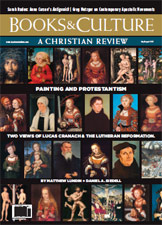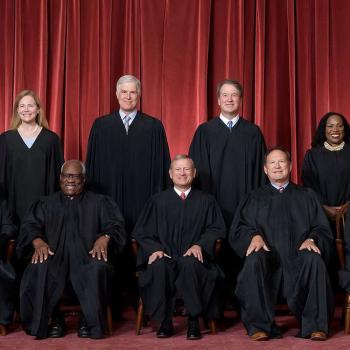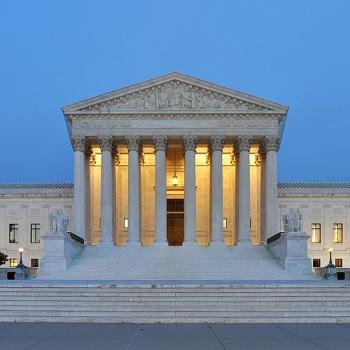The cover of Books & Culture, the Christian culture journal, features Lucas Cranach, and the cover story by Daniel Siedell is a review of a new book on the artist and patron of this blog. The book is called The Serpent and the Lamb: Cranach, Luther, and the Making of the Reformation by the important Reformation scholar Stephen Ozment. It breaks new ground in asserting the importance of Cranach and his art for Luther and for the Reformation. A major emphasis is how Cranach embodied and communicated Luther’s doctrine of vocation. I’m not quite finished reading Ozment’s book, but I plan to post on it for its own sake. Here is an excerpt from the Books & Culture piece:
by the important Reformation scholar Stephen Ozment. It breaks new ground in asserting the importance of Cranach and his art for Luther and for the Reformation. A major emphasis is how Cranach embodied and communicated Luther’s doctrine of vocation. I’m not quite finished reading Ozment’s book, but I plan to post on it for its own sake. Here is an excerpt from the Books & Culture piece:
Far from being compromised or constricted, Cranach flourished in and through his relationship with Luther, in large part because both the artist and the theologian shared converging interests and concerns, which, upon their meeting, made their relationship especially rich and productive, both personally and professionally.
This relationship developed only after Cranach decided to move his workshop into Wittenberg. Growing weary of the tedious demands of the court and a lack of challenging painting commissions (not to mention inconsistent remuneration), Cranach moved into the bustling university town, renovating several buildings for his home and workshop. He soon became a leading figure in city politics and one of the largest owners of real estate in town. A savvy businessman and entrepreneur, Cranach owned Wittenberg’s only pharmacy and operated the most powerful printing press in the region, a press which would publish Luther’s German translation of the New Testament, completed while he was in exile in Wartburg, and would generate the pamphlets and other printed materials that spread the ideas of the Reformation. Cranach was also a skilled statesman, traveling to the Netherlands on a diplomatic mission on behalf of Frederick the Wise. Far from being seduced by Luther, then, it was Cranach’s robust and expansive public life and his wisdom in statecraft that served the younger, less politically astute Luther, ultimately winning him the protection and patronage he needed from Frederick.
Although Cranach shared Luther’s anti-humanist and anti-Renaissance “Augustinian” view of the sinfulness and weakness of humanity, the convergence between the two men was less doctrinal than it was social, in what Ozment calls the “second phase” of the Reformation. This social phase focused on the recovery of the spiritual integrity of all aspects of domestic family life, from rearing children to marital sexuality. The home had been subjected to excessive and burdensome interference from Rome, creating legalistic burdens for laity and the clergy that were impossible to follow, the crushing nature of which resulted in licentious behavior that undermined the integrity of the family. Luther’s emphasis on justification as a “passive righteousness,” which he would develop in his lectures on Galatians in 1531, was already worked out socially and culturally, liberating the laity and the clergy to enjoy a robust family life, including an intimate sexual relationship within the institution of marriage. Ozment shows how Cranach and Luther both were fulfilled by their families, embracing fully and boldly the creational blessings of marital and familial life. Luther’s famously earthy language about marital sexuality is echoed in Cranach’s beautifully seductive women, whose enchantment was part of the created order and whose sexuality could be celebrated as a divine blessing. “By excising the external girth of the High Renaissance woman,” Ozment writes, “he set free her inner mirth. The result was more engrossing than the direct touching of skin and flesh.” Cranach and Luther’s relationship was further deepened through their families, as they served as godparents to each other’s children. . . .
Ozment’s Cranach embodies a proto-Lutheran approach to culture and vocation. Apparently unconcerned with the burden of demonstrating or achieving his salvation through his work, Cranach was freed to use and enjoy his God-given talents as a painter, politician, businessman, and advisor. He is also a historical example of what James Davison Hunter has called, in To Change the World (Oxford University Press, 2010), “faithful presence.” The Serpent and the Lamb makes the convincing case that without Cranach’s faithful presence, the Lutheran Reformation would not have possessed the scope that it had.
I might just add that this vocational view of family life, including the affirmation of sexuality in marriage, is what we explore in our own latest book Family Vocation: God’s Calling in Marriage, Parenting, and Childhood .
.

by the important Reformation scholar Stephen Ozment. It breaks new ground in asserting the importance of Cranach and his art for Luther and for the Reformation. A major emphasis is how Cranach embodied and communicated Luther’s doctrine of vocation. I’m not quite finished reading Ozment’s book, but I plan to post on it for its own sake. Here is an excerpt from the Books & Culture piece:













